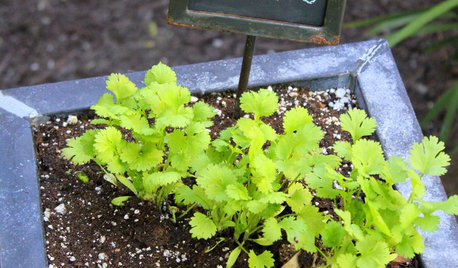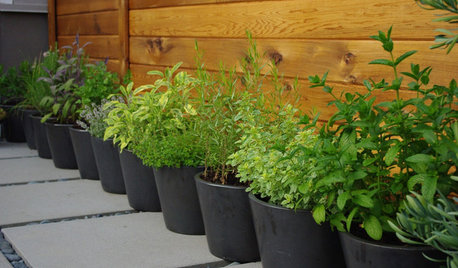coriander = cilantro?
Aiku
20 years ago
Related Stories

GARDENING GUIDESHerb Garden Essentials: Versatile Cilantro Adds Flavor to Herb Gardens
Love it or hate it, this cool-season herb contributes its unique flavor to any number or the world’s cuisines
Full Story
EDIBLE GARDENS12 Essential Herbs for Your Edible Garden
Make home cooking and drinks even better with herbs plucked from your own backyard or windowsill pot
Full Story
GARDENING GUIDES4 Herb Container Gardens for Fabulous Global Cuisine
Tingle your taste buds with the unbeatable taste of fresh herbs in your Italian, Asian, Mexican or French fare
Full Story
EDIBLE GARDENSGarden BFFs? Why Your Vegetables Are Begging for Companion Plants
Foster friendships among plants for protection from pests, pollination support and color camaraderie
Full Story
FARM YOUR YARDAdvice on Canyon Farming From L.A.'s Vegetable Whisperer
See how a screened garden house and raised beds help an edible garden in a Los Angeles canyon thrive
Full Story
CONTAINER GARDENS8 Easy Container Plants to Grow From Seed
Get beautiful blooms and herbs in summer by starting these choice garden picks from seed in spring
Full Story
KITCHEN DESIGNWorld of Design: Favorite Recipes From Food Lovers Around the Globe
Travel with your tastebuds and experience for yourself these international foodies' favorite dishes
Full StorySponsored






Violet_Z6
AikuOriginal Author
Related Professionals
Norfolk Landscape Architects & Landscape Designers · Ashland Landscape Architects & Landscape Designers · Fort Lee Landscape Architects & Landscape Designers · Suffern Landscape Architects & Landscape Designers · Wake Forest Landscape Contractors · Bristol Landscape Contractors · Brockton Landscape Contractors · Broomfield Landscape Contractors · Corona Landscape Contractors · Deerfield Beach Landscape Contractors · Fort Worth Landscape Contractors · Norristown Landscape Contractors · Oak Forest Landscape Contractors · Holland Roofing & Gutters · Norridge Roofing & GuttersHelen_vancouver
Violet_Z6
AikuOriginal Author
nuxindica
Violet_Z6
chaman
Violet_Z6
Violet_Z6
scratchmonkey
Violet_Z6
scratchmonkey
joycrick
bibik